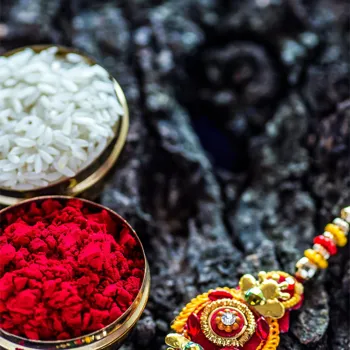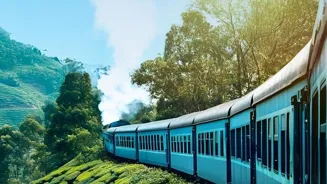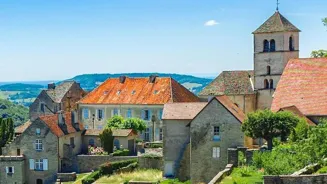Discover 9 Surprising Facts About Indian Festivals! Unravel hidden meanings & history behind celebrations. Dive in now!
Namaste, readers! Bharat, our India, is a land famed for its vibrant culture and its even
more vibrant festivals. We all know about Diwali, Holi, and Eid, of course. But did you know that these celebrations, so ingrained in our lives, harbor some truly fascinating secrets and hidden meanings?
Get ready to have your mind blown as we unravel 9 unexpected facts about Indian festivals that will make you see them in a brand new light! You might think you know it all, but trust us, there's always something new to discover about our incredible heritage. Lets begin this exciting journey!
Fact number one
Ever wondered why we throw colours during Holi? While most of us associate it with the celebration of good over evil (Hiranyakashipu and Prahlada's story), the colour play has a deeper agricultural connection. It signifies the arrival of spring and the vibrant colours of the harvest season.
Farmers rejoice in the blossoming fields, and the colours are a symbolic representation of this abundance. The traditional colours used were also derived from natural sources like turmeric, neem, and flowers, each having medicinal properties believed to ward off seasonal ailments.
So, next time you're doused in gulaal, remember you're participating in an age-old celebration of nature's bounty!
Ganesh Chaturthi: Revived by Tilak as national symbol against British rule
Fact number two might surprise you. Ganesh Chaturthi, devoted to Lord Ganesha, is celebrated with grand processions and the immersion of idols. But did you know that this festival, in its modern popularized form, was actually revived by Lokmanya Tilak during the Indian independence movement?
Tilak transformed the traditional home celebration into a large-scale public event to unite people and foster a sense of national identity against British rule. The festival became a platform for social and political gatherings, cleverly disguised under religious observances.
Thus, Ganesh Chaturthi became a powerful symbol of resistance and national pride, far beyond its religious origins. So, it became a national event.
Diwali: Festival of lights with practical purpose - insect repellent
Fact number three revolves around Diwali, also know as the festival of lights. The lighting of diyas, that is small earthenware lamps, is not only to attract good luck and prosperity (Lakshmi's welcome, folks!) but also has a very practical reason.
In ancient times, Diwali often coincided with the end of the monsoon season. The diyas, apart from being decorative, also served to illuminate homes and scare away insects that thrived during the wet months. Think of it as a traditional insect repellent, disguised as a beautiful ritual.
Essentially, this helped to maintain the cleanliness of the household. Diwali, therefore, was a practical as much as a devotional observance.
Fact four
The story of Raksha Bandhan! This festival of sibling love is commonly believed to be about a sister tying a rakhi to her brother, who pledges to protect her.

While that's the most prevalent tradition, the original scriptures actually talk about Raksha Bandhan as a bond of protection sought from priests or spiritual leaders. People would tie a sacred thread on the wrists of these figures, seeking their blessings and protection from evil.
The brother-sister connection gained prominence later, becoming the beautiful, personalized ritual we know today. This fact gives a new perspective to the festival and the Rakhi’s importance.
Fact five
You can find a lot about Onam and its history in the state of Kerala. The elaborate Onam Sadhya, the grand vegetarian feast served during Onam is more than just a delicious spread.
It’s a symbolic representation of King Mahabali's reign, a legendary ruler who is said to have brought prosperity and equality to Kerala. The feast is meant to mirror the abundance and happiness that prevailed during his rule.
Every dish, meticulously prepared and served on a banana leaf, is a tribute to Mahabali's golden era. This meal is a reminder of those periods.
Fact six
Navratri, the nine nights dedicated to the Goddess Durga, has multiple regional interpretations. While many celebrate it as the victory of Durga over the demon Mahishasura, in some parts of India, it's dedicated to Rama's victory over Ravana.
The Dussehra celebration, marking the end of Navratri, is where effigies of Ravana are burned, signifying the triumph of good over evil. So, sometimes these have different historical and epic roots. These stories depict the triumph over evil.
Fact seven
About the unique celebrations of Sankranti! This harvest festival, celebrated across India under different names, marks the transition of the Sun into Makara (Capricorn). While kite flying is synonymous with Sankranti in many states, it actually has a deeper significance.
It is said that flying kites in the early morning exposes the body to the sun's rays, which are beneficial during the winter months. The sun exposure helps to synthesize vitamin D. So, the kite activity is good for health.
Fact eight
The Rath Yatra of Puri, dedicated to Lord Jagannath, his brother Balabhadra, and sister Subhadra. Millions gather to witness the deities being carried on massive chariots.
What many don't know is that, symbolically, the Rath Yatra represents the Lord stepping out of the temple to mingle with the common people. It is a reaffirmation to the faith. It breaks down barriers and allows everyone, regardless of caste or creed, to partake in the divine procession.
This is the beauty of the amazing function.
Fact nine
Finally, let us look at the significance of the harvest festival of Pongal. Pongal, celebrated mainly in Tamil Nadu, is not just about thanking the Sun God for a bountiful harvest. The boiling over of milk in a new pot symbolizes prosperity and abundance.
The overflowing pot represents the farmer's hopes for a rich harvest and a prosperous year ahead. It's an auspicious sign for the good to happen. So, it's a symbol of nature's goodness.
Indian festivals hold hidden history, culture, and meanings
So, there you have it – nine surprising facts about Indian festivals that you probably never knew! Our festivals are truly a treasure trove of history, culture, and hidden meanings.
They're not just about rituals and traditions, but also about celebrating life, nature, and the enduring spirit of India. Next time you participate in these festivities, remember these lesser-known facts and appreciate the rich tapestry of our heritage even more. Jai Hind!
AI Generated Content. Glance/InMobi shall have no liability for the content







